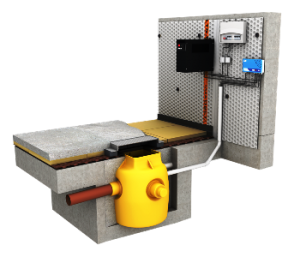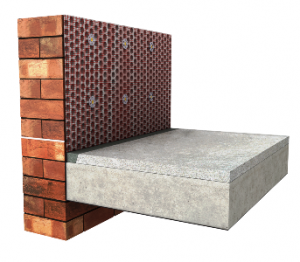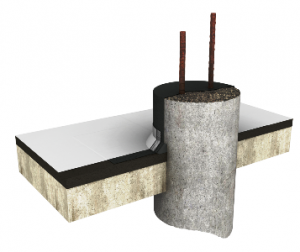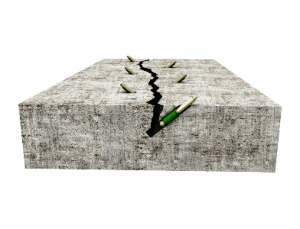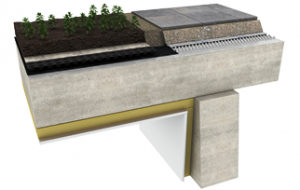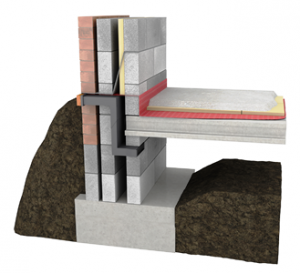DELTA MEMBRANE SYSTEMS LTD
Suppliers of: Type C Waterproofing membranes, Basement/Below Ground Cavity Drainage Systems, Tanking Systems, Basement Tanking Membranes, Type A Waterproofing Systems, Type B Waterproofing Systems, Structural Waterproofing, Waterproofing Systems, Submersible Pumps, Fl
Delta Membrane Systems Limited is the leading Type C Cavity Drain Membrane manufacturer in the United Kingdom and the UK arm of Dörken Gmbh & Co KG, the world’s largest manufacturer of cavity drain membranes. Delta Membrane Systems Limited provides a full range of waterproofing and damp proofing solutions for architects, specifiers, developers, contractors and homeowners alike on new, retrofit and refurbishment construction and in flood resilience. We also supply ground gas protection membranes protecting structures from harmful ground gases such as radon, carbon dioxide, methane and hydrocarbons.
With over 125 years of manufacturing experience Delta is an impeccable partner on every project. Our skills have been mastered through experience in the waterproofing industry. Delta’s Technical Team will help from concept to completion. Our hands-on approach and knowledge are what sets us apart.
Installing a Delta Membrane System offers complete protection to structures from ground water ingress and contaminates. Our products comply with British Standard 8102:2009, 8485:2015+A1:2019 and 85500:2015 and are BBA certified.
Our nationwide network of Delta Registered Installers offers a fully guaranteed installation service.
Proudly supporting the Women of Waterproofing Networking Group to inspire, retain and attract females into the Waterproofing sector.
CAD Drawings available on our website or via FastrackCAD
Main Products & Applications:
Structural Waterproofing:
Delta provides waterproofing products for all three types of waterproofing (Types A, B & C) as defined within BS 8102:2009.
Our ‘Type C’ Waterproofing Systems are a maintainable basement/below ground waterproofing solution for new-build basements, refurbishment and retrofit projects. The Type C System comprises of a Cavity Drain Membrane, Drainage system, Package Pump and Control System.
In principle a cavity drain membrane system allows moisture or running water to travel behind the membrane within a controlled drainage system. A cavity drain system requires minimal preparation and disturbance to an existing substrate.
Waterproofing Buried roofs/Podium Decks/Balconies & Terraces
In various formats podium decks have been around for many years, however they are becoming more widely used on top of basement constructions as either paved areas, gardens or terraces. A podium deck is a structural element which is essentially an elevated platform which allows for usage both above and below, these may be terraces over underground car parks, gardens over basements, balconies over terraces and patios.
External Drainage Systems
External Drainage Systems are also known as external tanking, which is the application of a waterproof membrane to the outside of a basement or substructure in accordance with BS 8102:2009 (Type A).
Ground Gas Protection Systems
Delta Membrane Systems Limited offer a comprehensive range of ground gas protection solutions along with its structural waterproofing solutions. From our MemTech ground gas membranes to waterproofing systems, our product range is designed to deal with all ground gas, contaminants and waterproofing related problems.
KÖSTER Tanking Products
Koster Bauchemie AG specialises in high quality structural waterproofing products and systems. These systems protect and preserve buildings and structures worldwide. Whether the subject is restoration of a heritage building, waterproofing of a new building, reinstalling failed horizontal barriers in masonry, restoration of wet basements, or waterproofing of roofs and facades, rest assured; with our comprehensive and deep product program Koster have the optimum solution.
Koster systems and products stand out due to their exceptionally easy and user-friendly application.
Specialist Basement Drainage – Pumps and Flood Protection
We have a team of application engineers who can assist with selection of ground, surface & foul water pump stations. This can be carried out against drawings, meetings on site & your offices or ‘via net’ viewer sessions.
We can also provide solutions for Flood prevention for both renovation and new build projects.
Damp Proofing – Above ground
Damp Proofing is the process in which methods are used to prevent water/water vapour from travelling through walls and floors from ground level up (rising damp). There are other ways damp can enter walls, but this is the most common.
Delta offer a range of physical and chemical DPC’s that can treat all types of Damp.
Structural Waterproofing – Pre-formed, Liquid Applied & Injection
Delta offer a wide range of waterproofing solutions for all types of applications. Products include pre-formed membranes & ancillary products, liquid applied systems, movement and construction joint waterproofing and injection systems. Please contact our technical team for support in selecting the right system for your project.
Further technical information and guidance is available on the Delta Membrane Systems website or via the BPi download Library
Social Media: Facebook / Twitter / Google+ / YouTube / Linkedin
Delat Membrane - Green Roofs – a sustainable approach
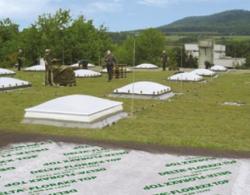 Green Roofs – a sustainable approach
Green Roofs – a sustainable approach
When it comes to roofing, green roofs are, without doubt, fantastic.
Green roofs or “living roofs” are roofs where planting or greenery is installed above the waterproofing layer. They are environmentally friendly because they are effectively giving back the footprint occupied by the building to nature.
Green roofs also have advantages in extending the service life of a waterproofing membrane system. For example, shielding it from exposure to UV radiation and freeze/thaw action in winter.
They also have some genuine other benefits:
• The blanket of greenery, sedum or growing medium also acts as an insulating blanket for the internal environment. This means that internal temperature variations will be less extreme, which can lead to savings in heating bills. In fact, a green roof with a thickness of 10cm has been shown to be of equal benefit to 1cm of thermal insulation.
• Benefits in acoustic sound insulation, typically at around 8 Decibels can occur.
Green roofs also have an aesthetic appeal, in softening the look of rooftops and blend buildings into the natural environment.
Types of Green Roof
There are two basic types of green roof: intensive and extensive.
Intensive Green Roofs
“Intensive Roofs” support larger plants with deeper roots. Soil cover can be anywhere between 15cm to 60cm(+) thick. These must be maintained like gardens and may require additional watering.
Extensive Green Roofs
“Extensive Roofs” are roofs with a relatively low thickness of growing medium and with vegetation typically 8-10cm high. Normal levels of rainfall are usually sufficient to support these without the need for additional watering.
Depending on whether the roof design is intensive or extensive will impact on the levels of maintenance required. Drought resistant plants will require little maintenance however intensive green roofs can require more maintenance, although no more than what would be expected for a normal garden.
Green Roof Waterproofing Design
Green roof planting is just the known part, the visual that can be admired — underneath is where the technical approach is required. Green roofs require not only a waterproofing system but also a suitable drainage solution.
Consider a green roof as a layered process in terms of structural waterproofing.
One of the most important components of a green roof is the waterproofing/roof membrane. A Waterproofing Designer’s philosophy defines what they wish to accomplish in the design of their waterproofing system and which principles they will use to do so. Identifying a robust and suitable design philosophy is an important aspect when designing a continuous system, as this will not only directly impact in how users install the system but also in future maintenance which will directly impact on the property owner.
Although the green roof will retain much of the rain that falls on it, maintaining proper drainage on a green roof is still incredibly important. Use of moisture-retention fleece lined membranes such as the Delta Floraxx Top or Terraxx, ensures water remains in the soil of the green roof rather than letting it pool on the waterproofing system below. Soil can potentially have a negative impact on the waterproofing solution, so it is vital that both the waterproofing solution and drainage layer are incorporated during the design phase.
As with any waterproofing system, maintenance and visual inspections are required and should be scheduled for regular inspection.
If you would like to hear more on our green roof details or further information about our range of waterproofing systems, please contact info@deltamembranes.com or call us on 01992 523 523.
Delta Membrane: Remedial Basement Waterproofing to Commercial Structure
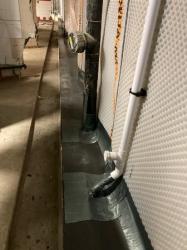 Remedial Basement Waterproofing to Commercial Structure
Remedial Basement Waterproofing to Commercial Structure
Overview
Waterproofing design is a key and critical component for successful construction of below ground structures. Whether it’s a completely new build or making smaller changes to an existing property, waterproofing design should never be overlooked.
Waterproofing might account for just a small fraction of a building’s total cost, but waterproofing defects can result in catastrophic consequences. When waterproofing fails, the implications are significant.
Delta’s MD, Kevin Dodds was approached to offer advice and guidance on a failed waterproofing system.
The existing structure had an impressive 5-level basement which houses: kitchens, food storage and food preparation areas, spa, plant rooms and accommodation. Near to a large river, the site sited well within the water table. The original waterproofing system was based on the secant piled walls and a block wall internally to provide a basic drained protection system with drainage holes at various points to drain to various levels.
Over time, the third floor had become completely saturated with all levels of the basement experiencing water ingress in varying levels from damp patches to significant “jets” of water and flows of water through the secant piles.
With remediation waterproofing design strategies, it may take some time to specify a suitable system. It is important that investigations are thoroughly carried out by individuals with the capability of diagnosing the defect, assessing the extent of that defect, and recommending a suitable corrective measure.
Methodology
Following preliminary site inspections, discussions were held on remedial options, methodology for remedial works and cost. During site observations significant water was sitting behind the corbel. This water could be entering the structure either: directly through the piles, from the floor above or from the joint between the soffit and piles or a combination of all three.
When designing a robust waterproofing remediation approach, attention to detail is critical.
Balancing costs with quality, method suitability testing was carried out on trial areas. A combination of resin injections and curtain injection were proposed prior to the installation of a Type C cavity drain membrane system to facilitate performance levels. Alternative combinations were suggested on two trial areas.
Firstly, the secant piles were exposed and thoroughly cleaned to remove dirt, salts, and loose particles. Whilst slow flowing leaks and drips could be sealed with resin injections alone, any fast-flowing water ingress was stopped in advance of injection works with the use of Koster KD Blitz 2.
Koster 2 IN 1 was injected into the corbel area with Koster IN 7 being injected into the vertical joints between the piles.
It was observed following inspections, over a 5-week period, that the corbel area was dry. Delta’s MD, Kevin Dodds suggested a further monitoring period, or until two periods of heavy rain to assess performance levels.
Phase 1
Following trials and analysis of approach, Kevin suggested the use of Koster G4 Gel as a curtain injection to areas identified after exposure works to each area, in combination with Koster 2 IN 1 injection resin to the corbel detail. Each area would be injected and monitored for a period of 3 weeks prior to the installation of the Delta Type C cavity drain system. To achieve a full belts and bridges approach, further tweaks to the design would be incorporated as and when different degrees of water ingress was encountered or where concrete to the scant piles were particularly poor, this included increasing levels of the G4 salt accelerant to the G4 Gel to increase speed of reaction without compromising the ability to spread to create the “waterproof curtain” behind the piles in the area.
As the entire sub-structure was susceptible to hydrostatic pressure, the best approach to the 5-levels would be to work one level at a time, working downwards in sequence.
Phase 2
The principles of the Type C, cavity drain system were straightforward and typical of a multi-level basement. Additional design considerations were incorporated for detailing the corbel on which mid floor slabs required a careful approach. Kevin suggested increasing the number of downward drainage weepholes from upper to lower levels for continued access for maintenance, along with discharge points.
In addition to this approach, compartmentalisation of the cavity drainage system was required for fire safety.
Products used
• Koster IN 7
• Koster 2 IN 1
• Koster G4 Gel
• Koster KD2 Blitz
• Koster Waterstop
• Koster NB 1
• Koster Repair Mortar Plus
• Koster KB Flex 200
• Delta MS 500
• Delta MS 20
• Delta Drainage Channel
• Dual V3 Pumps, Alertmaxx 2 High level alarms
Case Study Results
When it comes to remedial waterproofing, a great waterproofing outcome is with waterproofing experts. This project has been one of partnering, from our partners at Koster UK to the main contractor, sub-contractor, and Delta Registered Installers Prestec Ltd who expertly installed the remedial solution.
Partnering in this project has been one of open communication, commitment of shared goals and mutual trust.
The timeframe for these remedial works were over a - year period, with works to levels 2 and 3 having already been completed. The overall strategy, continuous trials, site monitoring and the ability to adapt the overall waterproofing design throughout the project have enabled completion of the works to date to an incredibly high standard with all parties confident with the positive and collaborative approach.
Technical Waterproofing Consultants can assist with the right products for the right results, whilst using the correct methodology.


